It’s easy to hear the words prespawn and post-spawn and instantly think offshore. The secondary points in pockets and creeks as fish are moving in to spawn and he humps and ledges as fish head back out are hotspots for bass fishing action. However, there is a short window on either side of the spawn where bass are in the general area where they actually bed, but they’re not locked on. We’ll refer to those windows as the immediate prespawn and immediate post-spawn.
During the immediate prespawn, you’ll often hear the term “cruising” which is used to describe bass behavior as they peruse the shallows in search of a mate and a good place to bed. Bass can be a little tricky to trigger during the immediate prespawn and seem to aggressively feed less and less the closer they actually get to bedding. But you can still catch a few good ones and cover is key when it comes to finding them.
As soon as the bedding process ends, fish look to feed up again. They are typically pretty spent from the spawning process however and will often times seek refuge in the shade of cover and wait for a meal to come to them. Also during this short window, bass will either guard their fry or actually eat them. Either way, those fry typically hang tight to cover and shade as well.
All this to say, overhanging bushes along the bank play well during both the immediate prespawn and immediate post-spawn. Cruising bass can be really hard to catch. Once you see them, they’ve typically seen you and their jaws lock. But they will position under or around an overhanging bush to sneak in one last meal or two.
Then, during the immediate post-spawn, overhanging bushes are probably the most productive they’ll be all year. Typically the bushes will hang within inches of the water, at times even breaking the water’s surface, creating great overhead cover for both the bass and fry.
So once you know where they are, how do you get them out?
Personally, I like to cover water and power fish during these windows. You’ll see a lot of guys skip a Senko or floating worm around and I’ll do that too when they’re actually on bed or if I miss one on something else. But typically, I want something in my hand that I can fish pretty fast.
These are my 5 favorite baits for power-skipping bushes around the spawn.
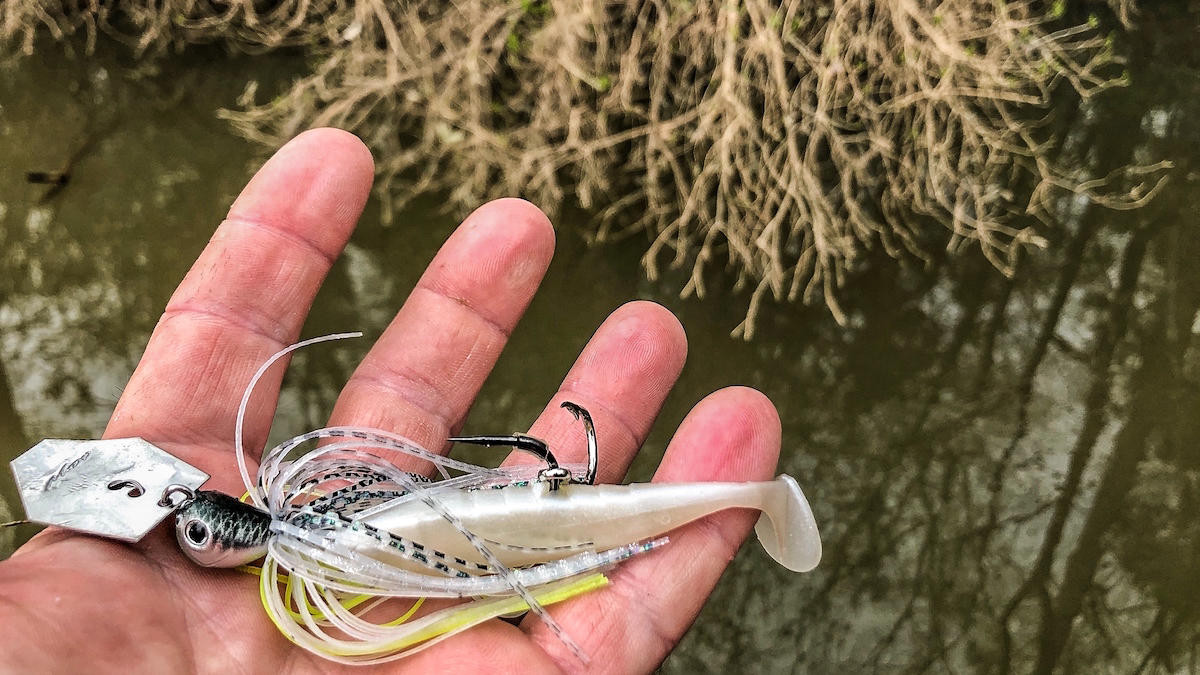
ChatterBait
If the water is still a little cool or on a cooling trend and has a little stain to it or even muddy, I like to skip a ChatterBait Jack Hammer under bushes like this. You can let the bait sink down a little and give fish the time to find it. When fishing this way, the strike zone is fairly slim. Right next the bank, the water is often super shallow. And the bushes typically only stick out 6 feet at most.
An inherent benefit of having to skip a bait to get it under a bush, is that it actually helps the fish locate it. In that way, you’re able to start your presentation before you even begin your retrieve. The bait skipping along the surface looks a lot like a fleeing baitfish and you’ll often times get bit as the bait is still skipping or just as you start to turn the reel handle.
For this reason, I’ll often skip a ChatterBait or other bait I’m fishing under bushes like this even when I don’t have to. Say I come to a bush that’s a little higher off the water or even a bare spot between the bushes, I’ll go ahead and skip the bait anyway. This also keeps you in a rhythm when skipping, which is important since the technique can be difficult to jump in and out of.
What I have also found is that trailer selection plays a big role in how well you can skip a ChatterBait. The claws of a big craw will actually grab the water and slow the bait’s momentum. You want something pretty solid with just a little action at the end like a Missile Baits Shockwave or something more malleable like a Z-Man ElaZtech Split Tail TrailerZ. A split tail trailer like this folds up well with a ChatterBait in order to not impede the skipping process but still has a good bit of action.
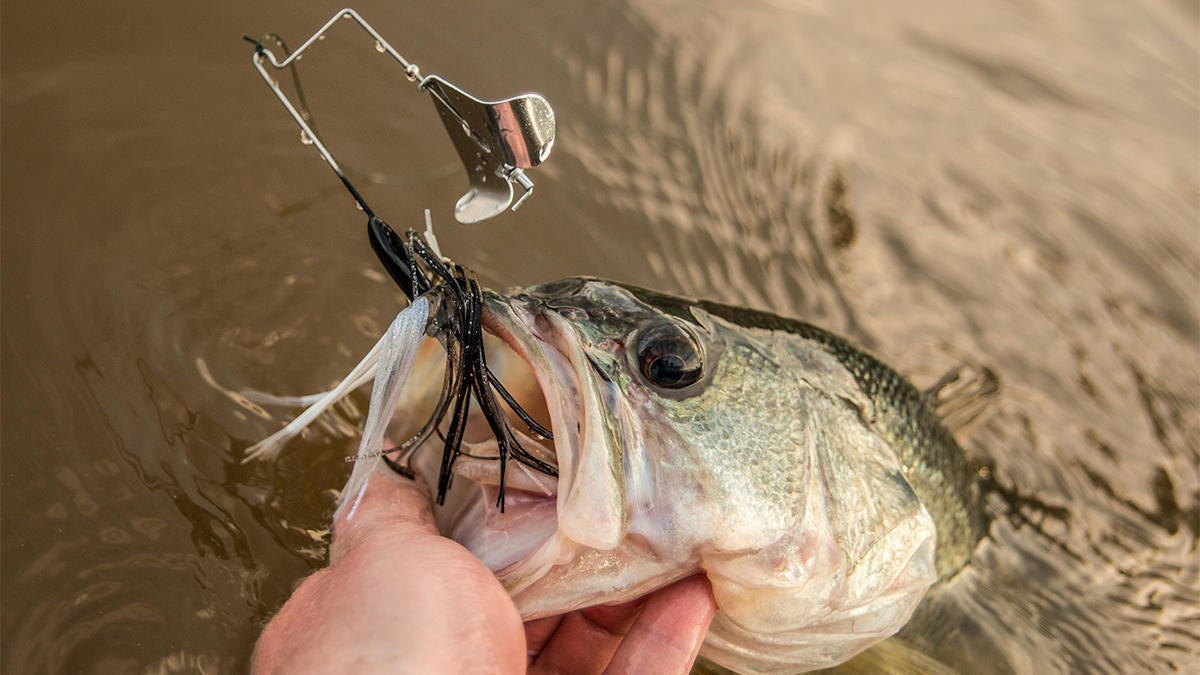
Buzzbait
If the water is a little warmer or on a warming trend, I like skipping a buzzbait, such as the Advantage Top Chop Buzzbait. To get a buzzbait to skip, I’ll go ahead and pull the skirt off and run a soft plastic bait up the shaft. There are a lot of good baits for this but Strike King Menace Grubs and Zoom Horny Toads are probably my two favorites. You basically want a fairly chunky bait that still has some action, but like choosing a ChatterBait trailer, you don’t want something with big appendages that will grab the water.
When skipping a buzzbait, you also want to make sure that your blade doesn’t bend away from the main shaft of the bait. “Opening up” a buzzbait like this will help you be able to fish the bait a little slower, but it also makes the bait less compact and far more difficult to skip. You want to keep the blade bent down to where it just can rotate and clear the main shaft of the buzzbait.
There will be times fishing a buzzbait like this where you couldn’t take it away from fish even if you wanted to. And then there will be times where they just come up and nudge the bait. In those latter situations, you’re going to want to swap over to a ChatterBait, swim jig or hollow body frog to give them something subsurface or not constantly moving. The fish will also behave this way when they’re actively bedding, swiping at the bait out of defense instead of aggression. In those situations, it’s best to swap completely over to something like a wacky rig.
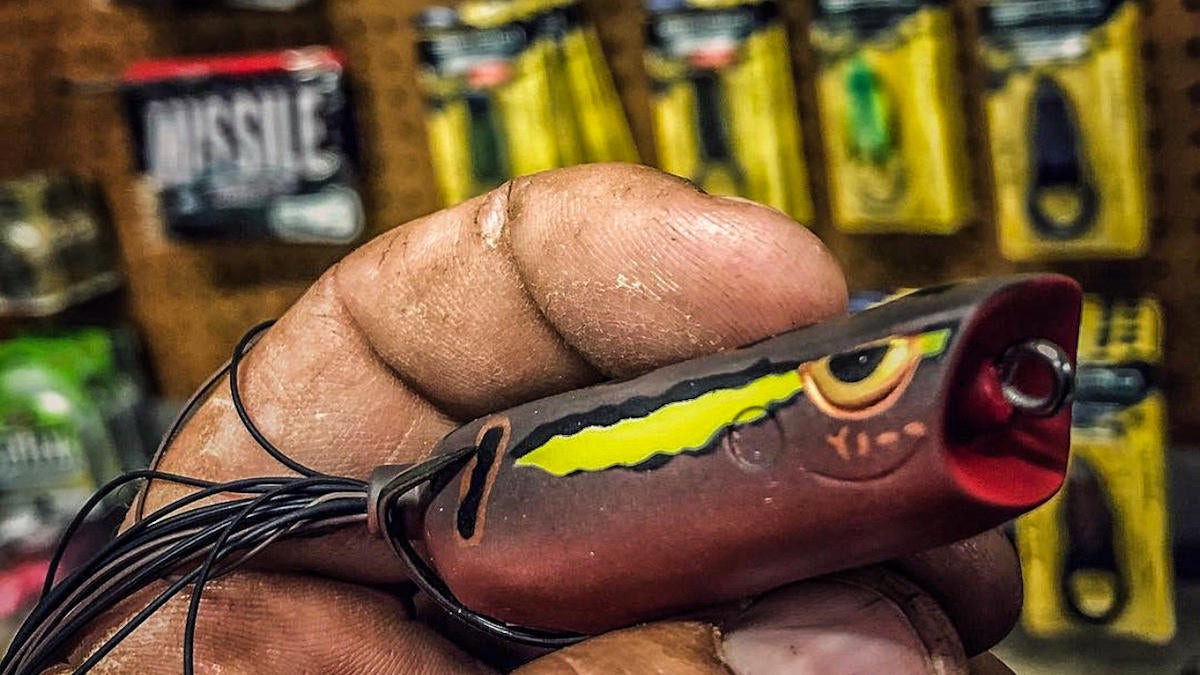
Hollow body frog
A hollow body frog is another great bait when fishing this way because it allows you to leave the bait in the strike zone a little longer. The other baits in this article can be fished at slightly different retrieves, but they still have to be on the move constantly. With a frog, you can fish one cast out for 2 or 3 minutes if you’d like.
When a fish does bite a frog, it has a mouth full of heavy-duty hooks capable of pulling it out from under and at times even through the wiry, sticky branches it’s amongst. Braid is another key component to fishing this way; especially for the frog, toad and buzzbait. At times I’ll skip a ChatterBait and swim jig on fluorocarbon. But if the water color will allow for it, I prefer braid for all 5 of these baits.
Frogs are particularly effective in the immediate post-spawn when bass are relating to their own fry. Whether bass are guarding their fry or feeding on them, a hollow body frog is either viewed as a threat or competition. Though I prefer a walking-style frog like the SPRO Bronzeye 65 in the immediate prespawn since it’s a little more subtle, a SPRO Bronzeye Poppin’ Frog 60 is my go-to in the immediate post-spawn for the exact opposite reason. It’s aggressive and impossible to ignore.
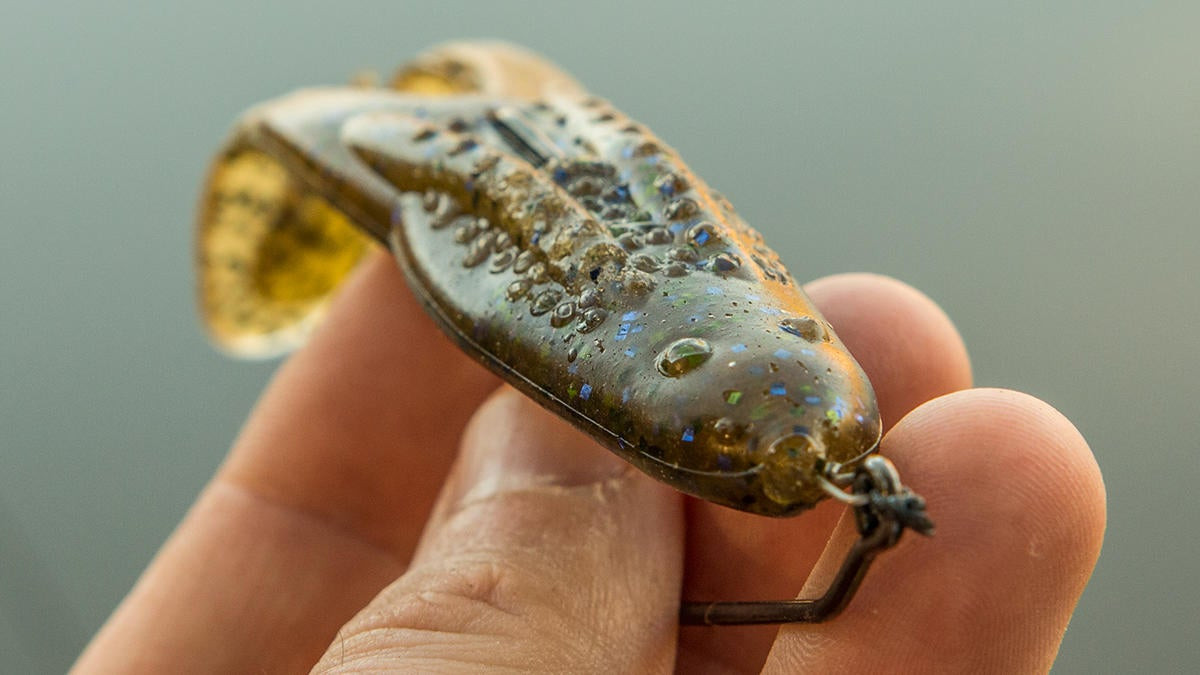
Toad
There’s not a lot of difference between the way I fish a bait like a Zoom Horny Toad and a buzzbait. As previously mentioned, I’ll even thread one on a buzzbait at times. The one difference that I will key on from time to time is that a toad on its own is slightly subtler. If I’m fishing in muddier water, I like to skip a buzzbait. It’s louder so it has more calling power.
But in clearer water, I like a toad a little better. It’s easier to present with a softer skip and overall not as intimidating to a bass. Especially a bait like a Horny Toad and less like a Stanley Ribbit or Strike King Rage Toad. Both a Ribbit and a Rage Toad make a good bit more commotion than a Horny Toad and all three have a unique sound. I will actually skip all three under bushes as well, depending on where we are in the spawning process.
When the fish are in the immediate prespawn, they can be a touch more lethargic due to the cooler water, but not finicky necessarily. That’s when I like the slow and steady chug of a Ribbit. This toad can be reeled a little slower than others and has a deeper, duller sound to it. When the fish aren’t as lethargic but may be a little finicky, say in the immediate post-spawn but not relating to fry, that’s when I like a Horny Toad. It has a faster action, but a crisper and quieter sound to it. Then when it’s an all out smash fest, the aggressive action and sound of a Rage Toad calls them from a ways off and triggers something barbaric in a bass.

Swim jig
I was torn here between a swim jig and a swimbait, like a Megabass Magdraft for example. Both subsurface baits that skip well and both capable of triggering monster strikes. I ultimately chose a swim jig, however, because it has a weed guard and a slightly better chance of converting strikes to catches.
Regardless of how good you are at skipping, your bait is going to either take a bad hop and head up into the bush from time to time or at minimum, need to traverse some submerged limbs. So the weed guard on a swim jig, such as the Advantage Swim Jig, makes it the perfect all terrain vehicle for skipping bushed. Again, you want to choose a trailer that makes skipping the bait a little easier, something fairly solid with a little action like a Missile Baits Shockwave instead of something with big, hanging appendages.
And again, like a ChatterBait, the swim jig gives you an alternative when the bass are just slapping at one of the topwater offerings we previously discussed. The main difference is that a swim jig gives you an option that’s a little more subtle than a ChatterBait.
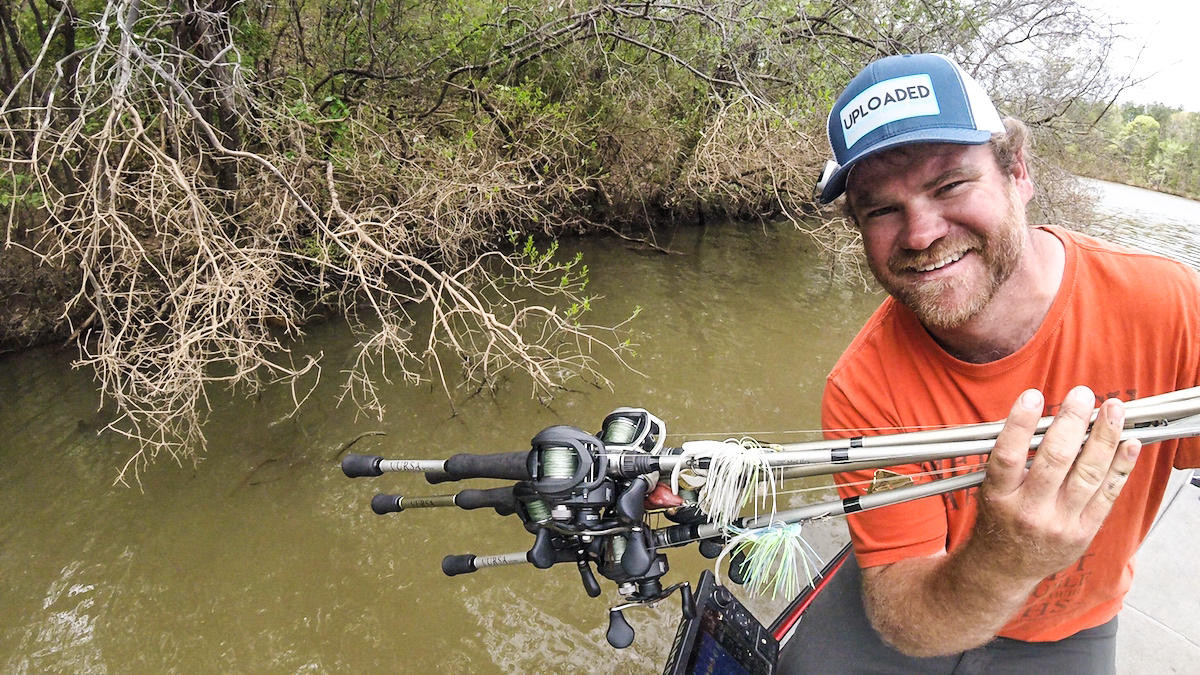
Tackle and technique notes
So for skipping bushes, I prefer power over finesse when possible. I’ll use between a 7-foot medium-heavy casting rod all the way up to a 7-foot, 3-inch heavy-action casting rod when power-skipping bushes depending on the bait. But the important thing is not to focus on which rod I select for what. You need to play with your rod selection to figure out what best suits you.
Skipping with a baitcaster can be pretty difficult. Luckily, I grew up doing it. On the flip-side, however, I can’t skip a spinning rod 5 feet consistently. But I have spent a good bit of time skipping baits with a baitcaster and have worked with enough people on it to know it’s not a one-size-fits-all kind of deal. Some people need a little more limber rod with a softer tip in order to whip the bait around. I personally prefer a stiffer rod and forcefully skip baits in order to have the backbone needed to haul a big one out if I get the bite I’m looking for.
Either way, the important thing is selecting a rod that best suits you. So I would recommend tying these 5 baits on rods in this range:
– 7-foot medium-heavy
– 7-foot heavy-action
– 7-foot, 3-inch medium-heavy
– 7-foot, 3-inch heavy-action
If you take those 4 rods out and rotate these baits through them, you’ll find certain combos are far easier to skip than others.
When skipping a bait with a casting rod, think about skipping a rock as a kid. Little roll casts or low side arm casts work best because you want to release the bait fairly close to the water’s surface. And you don’t want the bait to slam the surface. You want it to just kiss the surface. The closer to the boat you first make contact with the water, the shorter the distance the bait will inevitably travel.
When skipping something like a hollow body frog, I typically like for the bait to first hit the water just before the bush. The rest of these baits, I’ll start the skip a little further from the bush and closer to the boat.
Ultimately, skipping with a baitcaster is one of those things that just takes a ton of patience and practice. But if you take the time to mess with it, power-skipping bushes around the spawn can yield some really big bass.












